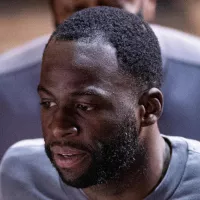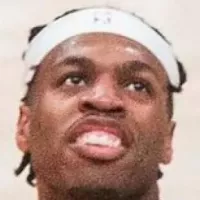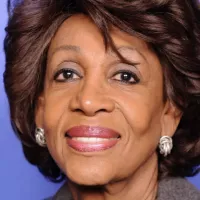Honduras, officially the Republic of Honduras, is a Central American country bordered by Guatemala, El Salvador, and Nicaragua. It has coastlines on both the Pacific Ocean (Gulf of Fonseca) and the Caribbean Sea (Gulf of Honduras). Tegucigalpa is its capital and largest city.
1903: American Troops Land
In 1903, American troops landed in Honduras.
1904: "Banana Republic" Term Coined
In 1904, the writer O. Henry coined the term "banana republic" to describe Honduras in his book Cabbages and Kings.
1907: American Troops Land
In 1907, American troops landed in Honduras.
1911: American Troops Land
In 1911, American troops landed in Honduras.
1912: American Troops Land
In 1912, American troops landed in Honduras.
1914: Contest for National Anthem
In 1914, a contest was carried out during the presidency of Manuel Bonilla to select the "National Anthem of Honduras".
November 1915: Official Adoption of National Anthem
The anthem was officially adopted on 15 November 1915, during the presidency of Alberto de Jesús Membreño.
1919: American Troops Land
In 1919, American troops landed in Honduras.
1921: First International Competition
Honduras's first international competition began in 1921 at the Independence Centenary Games featuring neighboring countries in Central America.
1924: American Troops Land
In 1924, American troops landed in Honduras.
1925: American Troops Land
In 1925, American troops landed in Honduras.
1927: 1927 Honduran census
The 1927 Honduran census provides no racial data.
1928: National Tree declared
In 1928 the national tree of Honduras was declared to be "the Pine that appears symbolically in our Coat of Arms".
1930: Creation of racial classifications in census
In 1930 five classifications were created: white, Indian, Negro, yellow, and mestizo.
1930: Cuyamel Fruit Company Domination
Until 1930, the Cuyamel Fruit Company dominated banana-exporting companies in northern Honduras.
1935: Use of classifications in 1935 census
In 1935 the census used five classifications: white, Indian, Negro, yellow, and mestizo.
1939: Immigration Law Changes
In 1939, changes to immigration law led many workers from the English-speaking Caribbean to leave Honduras.
1940: Use of classifications in 1940 census
In 1940 the census used five classifications: white, Indian, Negro, yellow, and mestizo.
December 1941: Honduras Joins Allied Nations
On December 8, 1941, Honduras joined the Allied Nations after Pearl Harbor.
January 1942: Honduras Signs Declaration by United Nations
On January 1, 1942, Honduras signed the Declaration by United Nations, along with twenty-five other governments.
1945: Establishment of Coat of Arms
The coat of arms was established in 1945. It is an equilateral triangle, at the base is a volcano between three castles, over which is a rainbow and the sun shining.
1950: First international competition in Baseball World Cup
In 1950, Honduras's baseball team participated in its first international competition at the Baseball World Cup, a prestigious global event.
1954: General Strike
In 1954, a general strike paralyzed the northern part of Honduras for more than two months, leading to reforms.
1960: Territorial Transfer from Nicaragua
In 1960, the International Court of Justice transferred the northern part of what was the Mosquito Coast from Nicaragua to Honduras.
1963: Military Coup
In 1963, a military coup removed the democratically elected president, Ramón Villeda Morales.
1964: Establishment of Football League
The Honduran National Professional Football League was established in 1964.
1965: Increase in landless peasants in Honduras
Since 1965 there has been an increase in the number of landless peasants in Honduras which has led to a growing class of urban poor individuals.
1968: Track & field games at the Summer Olympics
Since 1968, Hondurans have consistently participated in track & field games at the Summer Olympics.
1969: Football War
In 1969, Honduras and El Salvador fought what became known as the Football War, sparked by border tensions and tensions surrounding the World Cup qualifying matches.
1969: Rhyncholaelia digbyana declared National Flower
In 1969, the orchid, Rhyncholaelia digbyana, replaced the rose as the national flower of Honduras.
1971: Total Fertility Rate
In 1971, the Honduran total fertility rate was 7.4 births.
1972: CONCACAF Champions League Won
C.D. Olimpia won the CONCACAF Champions League in 1972.
1973: Absence of competition in international baseball
Since 1973, Honduras has experienced an absence of competition in international baseball, contributing to the lack of a baseball division within the country.
September 1974: Hurricane Fifi Damage
On September 18 and 19, 1974, Hurricane Fifi caused severe damage as it skimmed the northern coast of Honduras.
1975: Melgar Castro Leadership
From 1975 to 1978, Melgar Castro built the current physical infrastructure and telecommunications system of Honduras.
1975: Acceleration of Emigration
Since 1975, emigration from Honduras has accelerated as economic migrants and political refugees sought a better life elsewhere.
1978: Paz Garcia Leadership
From 1978 to 1982, Paz Garcia built the current physical infrastructure and telecommunications system of Honduras.
1979: Return to Civilian Rule
In 1979, Honduras returned to civilian rule.
April 1980: Constituent Assembly Elected
In April 1980, a constituent assembly was popularly elected to write a new constitution.
November 1981: General Elections Held
In November 1981, general elections were held in Honduras.
1981: Roberto Suazo Córdova Elected
In 1981, Roberto Suazo Córdova was elected president of Honduras, marking the end of a string of authoritarian military governments.
1982: Río Plátano Biosphere Reserve added to UNESCO List
In 1982, the Río Plátano Biosphere Reserve was added to the UNESCO World Heritage Sites List.
1982: New Constitution Approved
In 1982, the new constitution was approved in Honduras.
1984: Swimming games at the Summer Olympics
Since 1984, Hondurans have consistently entered swimming games at the Summer Olympics.
1988: CONCACAF Champions League Won
C.D. Olimpia won the CONCACAF Champions League in 1988.
1990: Improvement in HDI factors since 1990
Since 1990, the factors that go into Honduras's Human Development Index (an extended and healthy life, accessibility of knowledge, and standard of living) have all improved.
1991: Inequality increased in Honduras
Unlike other Latin American countries, inequality steadily increased in Honduras between 1991 and 2005.
1992: Honduras joins The Forum of Small States
In 1992, Honduras became a founding member of The Forum of Small States (FOSS).
1995: Domestic Violence Recognized
Between 1995 and 1997, Honduras recognized domestic violence as both a public health issue and a punishable offense due to efforts by the Pan American Health Organization (PAHO).
1996: Contraceptive Use
In 1996, 50% of women were using at least one type of contraceptive.
1997: Domestic Violence Recognized
Between 1995 and 1997, Honduras recognized domestic violence as both a public health issue and a punishable offense due to efforts by the Pan American Health Organization (PAHO).
1998: Hurricane Mitch Devastates Honduras
In 1998, Hurricane Mitch caused immense damage to Honduras, severely impacting the country's agricultural economy and infrastructure.
1998: Hurricane Mitch causes devastation
In 1998, Hurricane Mitch had a particularly devastating impact on Honduras, contributing to inequality and food insecurity.
1998: Hurricane Mitch virtually wipes out banana exports
In 1998, Hurricane Mitch virtually wiped out Honduras's banana exports.
1998: Family Assistance Program restructured
In 1998, the Family Assistance Program was restructured in an attempt to increase the effectiveness of cash transfers for health and education specifically for those in extreme poverty.
March 1999: Honduras signs ESAF with IMF
In March 1999, Honduras signed an Enhanced Structural Adjustment Facility (ESAF) with the International Monetary Fund, which was later converted to a Poverty Reduction and Growth Facility (PRGF).
1999: Poverty Reduction Strategy was implemented
Honduras's Poverty Reduction Strategy was implemented in 1999 and aimed to cut extreme poverty in half by 2015.
1999: Honduras experiences recession
In 1999, Honduras experienced a recession of -1.9% due to Hurricane Mitch.
July 2000: Honduras reaches HIPC decision point
In July 2000, Honduras reached its decision point under the Heavily Indebted Poor Countries Initiative (HIPC), qualifying for interim multilateral debt relief.
2000: Banana exports recover
In 2000, Honduras's banana exports recovered to 57% of pre-Hurricane Mitch levels.
2000: Honduran economy grew 4.8%
In 2000, the Honduran economy grew 4.8%, recovering from the 1999 recession induced by Hurricane Mitch. The maquiladora sector performed strongly.
2000: US Census Count of Honduran Residents
In the 2000 census in the United States, 217,569 residents identified as Hondurans.
2000: Social spending increased from 44% of GDP
Overall spending within Poverty Reduction Strategies have been focused on education and health sectors increasing social spending from 44% of Honduras's GDP in 2000.
2000: Tense Relations with Nicaragua
Throughout 2000 and early 2001, Honduras and Nicaragua had tense relations due to a boundary dispute off the Atlantic coast.
2001: Total Fertility Rate
In 2001 Honduran total fertility rate decreased to 4.4 births.
2001: Premiere of "Anita la cazadora de insectos"
Since the premiere of the movie "Anita la cazadora de insectos" in 2001, the level of Honduran productions has increased.
2001: Tense Relations with Nicaragua
Throughout 2000 and early 2001, Honduras and Nicaragua had tense relations due to a boundary dispute off the Atlantic coast.
2002: Increase in GDP between 1999 and 2002
There was only a 2.5% increase in GDP between 1999 and 2002 as a result of the Poverty Reduction Strategy implementation.
2004: Net Primary Enrollment Rate in 2004
In 2004, the net primary enrollment rate in Honduras was 94%.
2004: Social spending increased to 51% of GDP
Overall spending within Poverty Reduction Strategies have been focused on education and health sectors increasing social spending to 51% of Honduras's GDP in 2004.
December 2005: Puerto Cortés included in U.S. Container Security Initiative
In December 2005, Puerto Cortés, the primary seaport of Honduras, was included in the U.S. Container Security Initiative.
December 2005: Telecommunication sector was opened to private investment
On December 25, 2005, the telecommunication sector in Honduras was opened to private investment, as required under CAFTA.
2005: Increase in Violent Deaths
Between 2005 and 2013 according to the UN Special Repporteur on Violence Against Women, violent deaths increased 263.4 percent.
2005: Lempira stabilizes against US dollar
In 2005, the Lempira stabilized at L19 to the United States dollar.
2005: Inequality increased in Honduras
Unlike other Latin American countries, inequality steadily increased in Honduras between 1991 and 2005.
2006: Inequality saw a decrease
Between 2006 and 2010 inequality saw a decrease.
2006: Economic growth averaged 5.7 percent from 2006 to 2008
From 2006 to 2008, economic growth averaged 5.7 percent.
2006: Manuel Zelaya Held Office
From 2006 until 2009, Manuel Zelaya held office as president of Honduras.
2006: Secure Freight Initiative Announced
In 2006, the U.S. Department of Homeland Security and the Department of Energy announced the first phase of the Secure Freight Initiative (SFI). This initiative built upon existing port security measures and allowed the U.S. government to scan overseas containers for nuclear and radiological materials to improve risk assessment.
2007: Gross national income per capita is US$1,649
In 2007, Honduras's gross national income per capita was US$1,649.
2007: US Assistance to Honduras
In 2007, President Manuel Zelaya and President George W. Bush began talks on US assistance to Honduras to tackle drug cartels using US special forces.
2007: Scanning of Containers Begins
Since 2007, containers in selected ports have been scanned for radiation and other risk factors before being allowed to depart for the United States.
2008: Unemployment grew between 2008 and 2012
Between 2008 and 2012 unemployment grew from 6.8 percent to 14.1 percent.
2008: Honduras joins ALBA
In 2008, Zelaya joined Hugo Chávez' Bolivarian Alliance for the Peoples of Our America (ALBA). After the 2009 coup, Honduras withdrew its membership.
2008: Religious Freedom Report, 2008
The International Religious Freedom Report, 2008, notes that a CID Gallup poll reported that 51.4% of the population identified themselves as Catholic, 36.2% as evangelical Protestant, 1.3% claiming to be from other religions, and 11.1% do not belong to any religion or unresponsive.
June 2009: Coup ousts President Zelaya
In June 2009, a coup d'état ousted President Manuel Zelaya, who was then taken to Costa Rica in a military aircraft. The United Nations General Assembly denounced the coup and called for Zelaya's restoration.
2009: Study on Sexual Violence Policies
A study done in 2009 showed that the policy requires health care providers to report cases of sexual violence, emergency contraception, and victim referral to legal institutions and support groups, very few other regulations exist within the realm of registry, examination and follow-up.
2009: Manuel Zelaya Held Office
From 2006 until 2009, Manuel Zelaya held office as president of Honduras.
2009: Military Coup
In 2009, Honduras experienced a military coup, impacting the nation's political stability.
2009: Spiegel International analysis on ALBA
In 2009, a Spiegel International analysis noted that one reason to join ALBA was discounted Venezuelan oil.
2009: Constitutional Crisis
In 2009, a constitutional crisis resulted in a coup, transferring power from the president to the head of Congress, leading to OAS suspension.
2009: Guaymuras Political Dialogue
In 2009, the name Guaymuras was revived for the political dialogue that took place in Honduras.
2009: Social spending and minimum wage increase
Prior to its 2009 coup Honduras widely expanded social spending and an extreme increase in minimum wage.
2009: Honduran coup d'état
The 2009 Honduran coup d'état led to a variety of economic trends in the nation.
July 2010: Full diplomatic relations re-established with Mexico
In July 2010, full diplomatic relations between Honduras and Mexico were re-established after being temporarily severed following the 2009 coup.
2010: Economic growth averaged 7% a year
As of 2010, Honduras's economic growth had averaged 7% a year, one of the highest rates in Latin America.
2010: Economic growth averaged 3.5 percent annually between 2010 and 2013
Between 2010 and 2013 economic growth averaged 3.5 percent annually.
2010: Honduras Withdraws from ALBA
In 2010, Honduras withdrew from ALBA after the 2009 Honduran coup d'état.
2010: Population Age Distribution in 2010
In 2010, the population of Honduras had 36.8% below the age of 15, 58.9% between 15 and 65 years old, and 4.3% were 65 years or older.
2010: US Census Count of Honduran Residents
In the 2010 census in the United States, 617,392 residents identified as Hondurans.
2010: Inequality increased again
Inequality increased again in 2010.
November 2012: ERIC Survey Findings
In late November 2012, a survey found that 60% believed the police were involved in crime, 45% had "no confidence" in the Supreme Court, and 72% thought there was electoral fraud in the primary elections of November 2012.
2012: US State Department Estimate of Hondurans in the US
A 2012 US State Department estimate suggested that between 800,000 and one million Hondurans lived in the United States at that time, nearly 15% of the Honduran population.
2012: Unemployment grew between 2008 and 2012
Between 2008 and 2012 unemployment grew from 6.8 percent to 14.1 percent.
2012: Extreme poverty increase
Extreme poverty increased to 66.5 percent by 2012.
2012: Peak Homicide Violence
Homicide violence reached a peak in 2012 with an average of 20 homicides a day.
2012: LiDAR Scanning Reveals Settlements
In 2012, LiDAR scanning revealed previously unknown high-density settlements in La Mosquitia, corresponding to the legend of "La Ciudad Blanca".
2012: Memorandum of Understanding for a Special Zone
In 2012, a memorandum of understanding with international investors was approved by the Honduran government to build a special zone (city) with its own laws, tax system, judiciary, and police.
2012: Peace Corps Withdrawal
The Peace Corps withdrew its volunteers from Honduras in 2012, citing safety concerns.
2012: Social spending decreased
When Zelaya was removed from office social spending as a percent of GDP decreased from 13.3 percent in 2009 to 10.9 recent in 2012.
2013: Ethnic Breakdown of Honduran Society
According to the 2013 census, the ethnic breakdown of Honduran society was 83% mestizo, 8% white, 7% indigenous (primarily Lenca), and 2% black.
2013: Increase in Violent Deaths
Between 2005 and 2013 according to the UN Special Repporteur on Violence Against Women, violent deaths increased 263.4 percent.
2013: Economic growth averaged 3.5 percent annually between 2010 and 2013
Between 2010 and 2013 economic growth averaged 3.5 percent annually.
2013: Ratification of Decree 120
In 2013, Honduras's Congress ratified Decree 120, which led to the establishment of Zones for Employment and Economic Development (ZEDEs).
2013: Creation of ZEDEs
In 2013, a new administrative division called ZEDE (Zonas de empleo y desarrollo económico) was created, featuring high autonomy and free market capitalism.
2013: Agriculture accounts for 14% of GDP
In 2013, agriculture accounted for 14% of Honduras's gross domestic product (GDP).
2013: Expected Electoral Fraud
In late 2012, a survey by ERIC found that 56% expected the presidential, legislative and municipal elections of 2013 to be fraudulent.
January 2014: Juan Orlando Hernández Takes Office
Juan Orlando Hernández took office as president on January 27, 2014.
2014: Hernandez's First Term
Former president Juan Orlando Hernández, who served two terms between 2014 and January 2022, was extradited to the United States to face charges of drug trafficking and money laundering in April 2022.
2014: Female Refugee Minors
In 2014, 40% of unaccompanied refugee minors were female due to sexual violence and femicide crimes.
2014: Measures to Improve Tourist Safety
In 2014, the government and businesses took measures to improve tourist safety in Roatán and the other Bay Islands, leading to lower crime rates compared to the Honduran mainland.
2014: Primary School Completion Rate in 2014
In 2014, the primary school completion rate in Honduras was 90.7%.
June 2015: Construction of First ZEDEs Begins
In June 2015, the government began construction of the first Zones for Employment and Economic Development (ZEDEs).
2015: Poverty Reduction Strategy aimed to cut extreme poverty in half by 2015
Honduras's Poverty Reduction Strategy was implemented in 1999 and aimed to cut extreme poverty in half by 2015.
2015: IHDI for Latin America and the Caribbean
In 2015 for the entire region, inequality of life expectancy at birth was 22.9%, inequality in education was 14.0% and inequality in income was 34.9%.
2015: Levels of inequality in each aspect of development
In 2015 inequality of life expectancy at birth was 19.6%, inequality in education was 24.4% and inequality in income was 41.5%.
2015: Gender Inequality Index (GII) in Honduras
In 2015, Honduras had a Gender Inequality Index (GII) of .461 and ranked 101 of 159 countries. 25.8% of Honduras's parliament is female.
2015: Honduras ranked 130 of 188 countries with a Human Development Index of .625
In 2015, Honduras was ranked 130 out of 188 countries with a Human Development Index (HDI) of 0.625, classifying it as having medium development.
2015: Gender Development Index (GDI) in 2015
In 2015, the Gender Development Index (GDI) was .942 with an HDI of .600 for females and .637 for males. Males have a GNI per capita of $6,254 while that of females is only $2,680.
2015: Homicide Rate
Official statistics from the Honduran Observatory on National Violence show Honduras's homicide rate was 60 per 100,000 in 2015.
2016: Drop from 2016 figures.
As recently as 2017, organizations such as InSight Crime's show figures of 42 per 100,000 inhabitants, a 26% drop from 2016 figures.
2016: More than 66% of the population was living below the poverty line
In 2016, more than 66% of the population in Honduras was living below the poverty line.
December 2017: Hernández Declared Election Winner
In December 2017, Hernández was declared the winner of the election after a partial recount, following a very close and disputed election.
2017: Decrease in Homicide Rate
As recently as 2017, organizations such as InSight Crime's show figures of 42 per 100,000 inhabitants, a 26% drop from 2016 figures.
2017: Honduras signs UN treaty on the Prohibition of Nuclear Weapons
In 2017, Honduras signed the UN treaty on the Prohibition of Nuclear Weapons.
2017: Electoral Fraud Controversy
In 2017, controversy arose from claims of electoral fraud in the presidential election in Honduras.
January 2018: Hernández Sworn in for Second Term
In January 2018, Hernández was sworn in for a second presidential term.
2019: Forest Landscape Integrity Index
In 2019, Honduras had a Forest Landscape Integrity Index mean score of 4.48/10, ranking it 126th globally out of 172 countries.
November 2021: Xiomara Castro Wins Presidential Election
On November 28, 2021, Xiomara Castro won the presidential election with 53% of the votes.
2021: Honduras Population in 2021
In 2021, Honduras had a population of 10,278,345.
January 2022: End of Hernandez's term
In April 2022, former president Juan Orlando Hernández, who served two terms between 2014 and January 2022, was extradited to the United States to face charges of drug trafficking and money laundering.
January 2022: Castro Succeeds Hernandez
On January 27, 2022, Xiomara Castro succeeded Juan Orlando Hernández as president, becoming the first woman to serve as president.
January 2022: Xiomara Castro Sworn In
On January 27, 2022, Xiomara Castro was sworn in as the first female president of Honduras.
April 2022: Hernandez Extradited to US
In April 2022, former president Juan Orlando Hernández was extradited to the United States to face charges of drug trafficking and money laundering.
2022: Poverty Rates in Honduras
In 2022, according to the National Institute of Statistics of Honduras (INE), 73% of the country's population lived in poverty and 53% lived in extreme poverty.
2025: Global Innovation Index Ranking in 2025
Hondura was ranked 119th in the Global Innovation Index in 2025.
Mentioned in this timeline

George W Bush the rd U S President - is...
The United States of America is a federal republic located...

Inflation in economics signifies an increase in the average price...

Football is a family of team sports primarily involving kicking...
El Salvador officially the Republic of El Salvador is a...

FIFA F d ration Internationale de Football Association is the...
Trending
William Richard is an American professional basketball player currently playing for the Golden State Warriors in the NBA He was...
Joshua Okogie is a Nigerian-American professional basketball player currently with the Charlotte Hornets in the NBA He played college basketball...

5 months ago Draymond Green trade scenarios: Lakers, Warriors, and Mavericks involved in potential deals.

7 months ago Buddy Hield's Impact Extends Beyond Scoring in Warriors' Win; Butler's Pep Talk

5 months ago Zach Edey, Grizzlies center, faces reckless driving charge for speeding in Indiana.

21 days ago Lakers Defeat Trail Blazers 123-115, Smith shines as unexpected hero alongside Hachimura.
Popular
Aftyn Alyssa Behn is an American politician currently serving as...

William Franklin Graham III commonly known as Franklin Graham is...

Candace Owens is an American conservative political commentator and author...

XXXTentacion born Jahseh Dwayne Ricardo Onfroy was a controversial yet...

Marjorie Taylor Greene known as MTG is a U S...

Maxine Waters is an American politician who has served as...